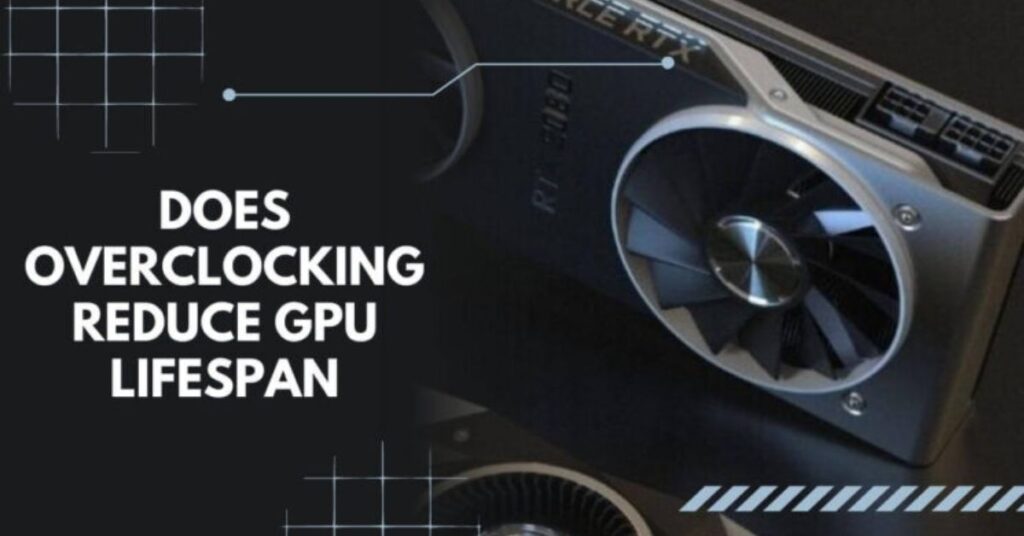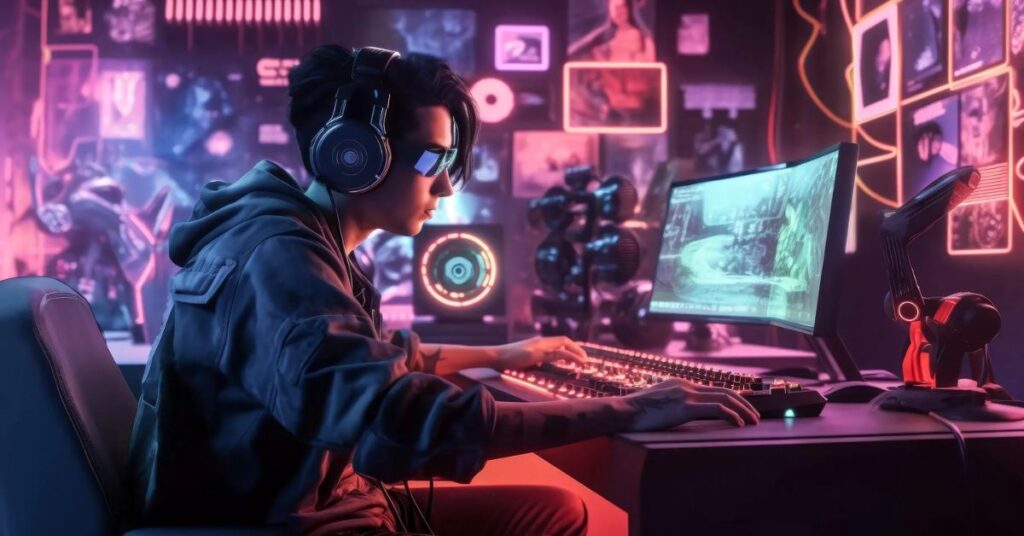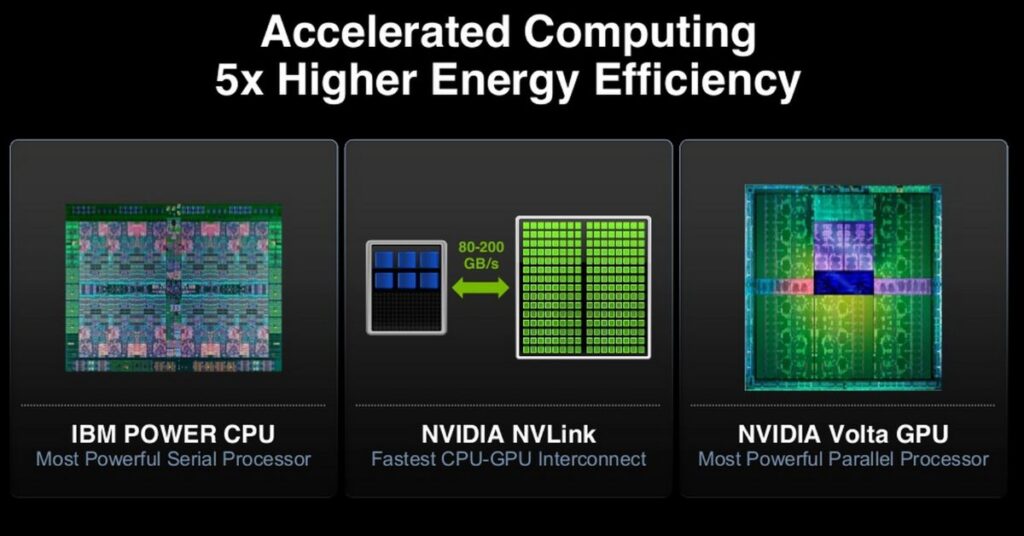Nvidia GPUs usually last 5–8 years. Keep them cool and clean for longer life. Heavy gaming or mining can shorten their lifespan.
In this guide, we’ll explain in simple words what you can expect from your Nvidia GPU and how to make it last longer.
Factors Influencing the Lifespan of an Nvidia GPU
The lifespan of an Nvidia GPU is affected by several factors:
- Usage: Heavy gaming, video editing, and mining put more strain on the GPU, reducing its lifespan.
- Cooling Systems: Proper cooling can help maintain the GPU’s health.
- Environmental Conditions: Dust, heat, and humidity can cause wear and tear.
- Overclocking: Overclocking can reduce lifespan if not done carefully.
Average Lifespan of an Nvidia GPU
On average, an Nvidia GPU can last between 5 and 7 years under normal usage. However, this can vary based on the model and how frequently it’s used. For instance, gaming GPUs used extensively for high-resolution games may experience a decline in performance after 5 years. In contrast, GPUs used for lighter tasks or with excellent cooling systems may last closer to the 7-year mark.
How to Extend the Lifespan of Your Nvidia GPU
To maximise your Nvidia GPU’s lifespan:
- Regularly clean it to prevent dust buildup.
- Keep the system cool to avoid overheating.
- Update drivers regularly.
- Avoid overclocking unless necessary, and use proper cooling.
Signs That Your Nvidia GPU Is Reaching the End of Its Life
Signs your Nvidia GPU may be nearing the end include:
- Performance issues like stuttering or low frame rates.
- Artefacts such as strange graphical glitches.
- Overheating despite cooling efforts.
- Frequent crashes or system freezes during intensive tasks.
Comparing the Lifespan of Nvidia GPUs with Other Brands
Nvidia GPUs typically have a longer lifespan compared to competitors like AMD. Nvidia’s
Higher-end models, such as the RTX series, often come with better cooling solutions, resulting in better durability. However, AMD GPUs can still perform well over time, though they might not be as efficient under heavy load conditions. Comparing longevity depends on your usage needs and model type.
How Long Do Nvidia GPUs Typically Last?
Typically, Nvidia GPUs last between 5 and 7 years, but this can vary based on the intensity of use and the model. Professional users, such as those in video editing or 3D rendering, might notice a decline in performance after 5 years. For casual gamers, the lifespan can stretch closer to the 7-year mark. Regular maintenance and proper cooling can also extend the lifespan.
Can Overclocking Impact the Lifespan of Your Nvidia GPU?

Overclocking your Nvidia GPU increases its performance but can also reduce its lifespan. Pushing the GPU beyond its factory settings generates extra heat, which can damage its internal components over time. If you’re overclocking, ensure that your cooling system is capable of handling the additional heat. Regular monitoring of temperatures and usage is essential to prevent long-term damage.
Environmental Conditions: How Temperature and Dust Affect Nvidia GPU Lifespan
The environmental conditions in which your Nvidia GPU operates play a major role in its lifespan. High temperatures can cause the GPU to overheat, leading to thermal damage. Dust can clog the fans and cooling systems, reducing airflow and efficiency. Ensuring that your PC case is well-ventilated and free from dust buildup will help keep your GPU cool and functioning for a longer period.
The Role of Cooling Systems in Prolonging Nvidia GPU Life
Cooling systems are crucial for maintaining the health of your Nvidia GPU. Proper cooling ensures that the GPU operates at optimal temperatures, reducing the risk of overheating. The better the cooling system, the longer the GPU can perform without experiencing thermal throttling or damage. High-end gaming PCs often use liquid cooling systems, which are more efficient than air cooling, prolonging the GPU’s life.
How to Maximise the Lifespan of Your Nvidia GPU with Proper Maintenance
Follow these maintenance tips:
- Clean regularly to avoid dust accumulation.
- Ensure optimal airflow around the GPU.
- Monitor temperatures and take action if it gets too hot.
- Regularly update drivers and check for software optimisations.
The Impact of Gaming on the Lifespan of an Nvidia GPU

Gaming puts a significant load on your Nvidia GPU, especially with high-resolution and graphically demanding games. Constant usage at high performance can wear out the GPU faster than more passive uses. However, gaming does not immediately reduce lifespan if the GPU is well-maintained with proper cooling. Taking breaks and ensuring the GPU is not overworked will help prolong its lifespan..
How Professional Use (Rendering, Video Editing) Affects GPU Longevity
Professional use, such as video editing, 3D rendering, and graphic design, demands constant GPU power. These activities cause GPUs to run at high usage levels for extended periods, which can accelerate wear and tear. Professionals must monitor the GPU’s temperature and ensure a strong cooling system to minimize damage. Regular maintenance and breaks during long sessions can help improve longevity.
Does Mining Affect the Lifespan of an Nvidia GPU?
Crypto mining is known to reduce the lifespan of Nvidia GPUs significantly. The continuous load from mining puts constant stress on the GPU, generating heat and causing wear. If you are mining with your GPU, consider using specialised mining hardware or adding extra cooling systems to reduce the impact on your Nvidia GPU’s life. Frequent monitoring is key to preventing overheating.
How to Monitor Your Nvidia GPU’s Health and Performance
Monitoring your Nvidia GPU’s health involves checking key metrics like temperature, fan speed, and performance during use. Software tools like MSI Afterburner or GPU-Z can provide real-time monitoring of these factors. Keeping an eye on these will help identify potential issues early, such as overheating or performance drops, allowing you to take action before it’s too late.
The Importance of Regularly Updating Nvidia GPU Drivers for Longevity
Regularly updating your Nvidia GPU drivers ensures that your GPU performs at its best. Outdated drivers can cause compatibility issues, performance drops, and even system crashes, which can shorten the GPU’s life. Always install the latest driver updates to avoid unnecessary strain on the GPU and to ensure it continues to work efficiently with new software and games.
How Stress Testing and Benchmarking Can Help Assess Nvidia GPU Lifespan
Stress testing and benchmarking are essential for assessing the performance and longevity of your Nvidia GPU. Stress testing involves pushing the GPU to its limits to see how it handles high workloads, while benchmarking provides performance scores under different conditions. These tests can detect issues with overheating or performance degradation that reduce the lifespan of your GPU.
How Power Supply and Voltage Affect the Lifespan of Your Nvidia GPU

A stable power supply is crucial for maintaining the health of your Nvidia GPU. Voltage fluctuations or power surges can damage internal components, shortening the GPU’s lifespan. Ensure that your power supply unit (PSU) delivers the correct wattage and is of good quality. Using a UPS (uninterruptible power supply) can also help protect your GPU from sudden power loss.
The Most Durable Nvidia GPU Models: Which Ones Last the Longest?
Certain Nvidia GPUs are designed to be more durable than others. High-end models like the RTX 3080 or RTX 3090 are equipped with superior cooling systems, making them more resistant to wear and tear. Professional-grade GPUs, such as the Nvidia Quadro series, are also built for extended use and can handle demanding tasks for longer periods, extending their lifespan.
FAQ’s
Q 1: What can I do to make my Nvidia GPU last longer?
To extend the lifespan of your Nvidia GPU, make sure to keep it clean and free from dust. Use proper cooling systems to avoid overheating and prevent overclocking unless necessary. Regularly update your drivers and monitor the GPU’s temperature to ensure it runs optimally.
Q 2: Does overclocking shorten the lifespan of my Nvidia GPU?
Yes, overclocking increases the load and generates extra heat, which can cause internal components to wear out faster. If you choose to overclock, ensure your cooling system is efficient and monitor temperatures regularly.
Q 3: Does Overheating Affect the Lifespan of an Nvidia GPU?
Yes.
Q 4: Can Regular Cleaning Prolong the Lifespan of My Nvidia GPU?
Yes.
Q 5: Will Mining Reduce the Lifespan of My Nvidia GPU?
Yes.
Conclusion
The lifespan of an Nvidia GPU typically ranges from 5 to 8 years, depending on usage, cooling, and maintenance. Regular cleaning, optimal cooling, and avoiding overclocking can help extend its life. However, factors such as gaming, mining, or professional use can accelerate wear. By following proper care practices, you can ensure your GPU lasts longer and performs efficiently.

Pingback: What Temp Is Too Hot For GPU - Heat Control Tips